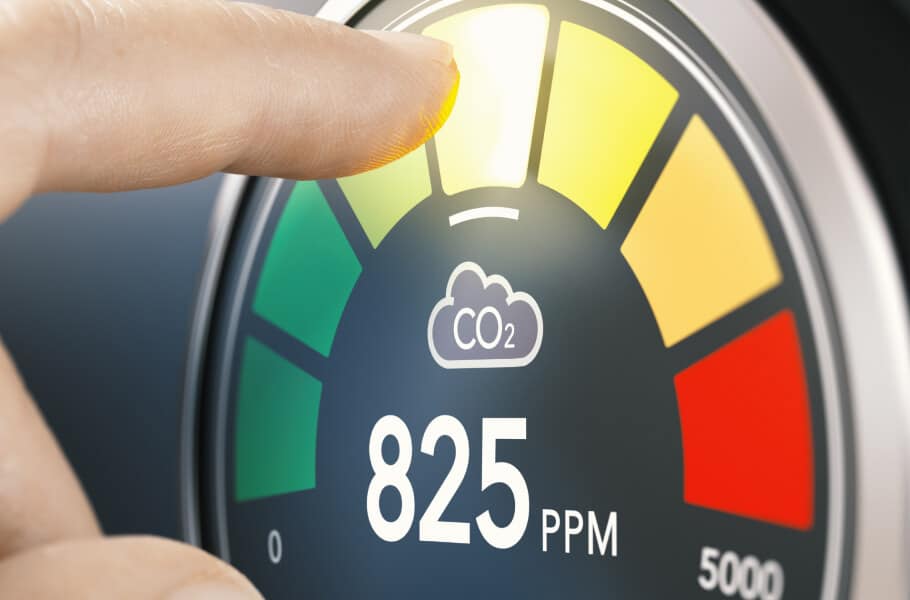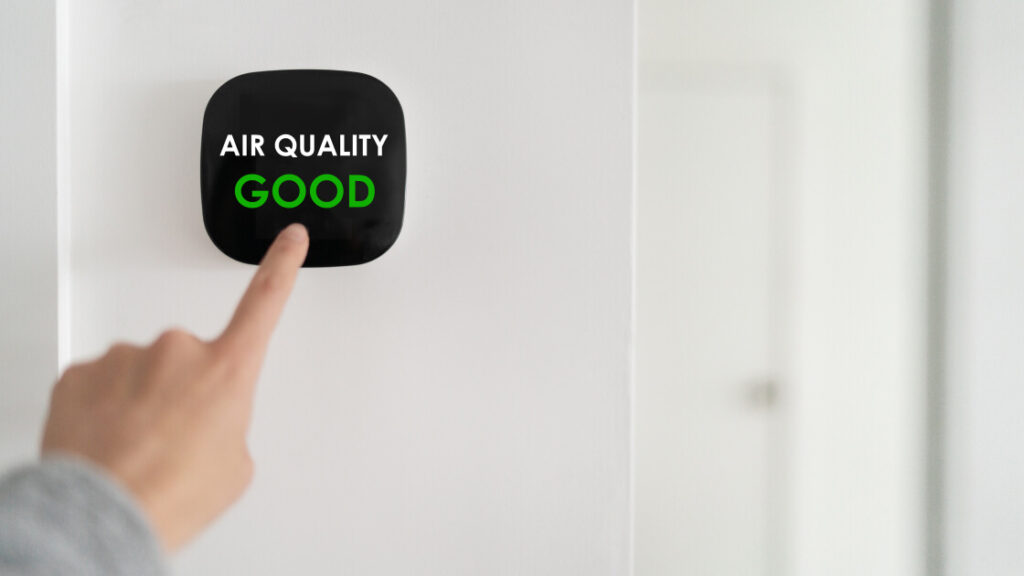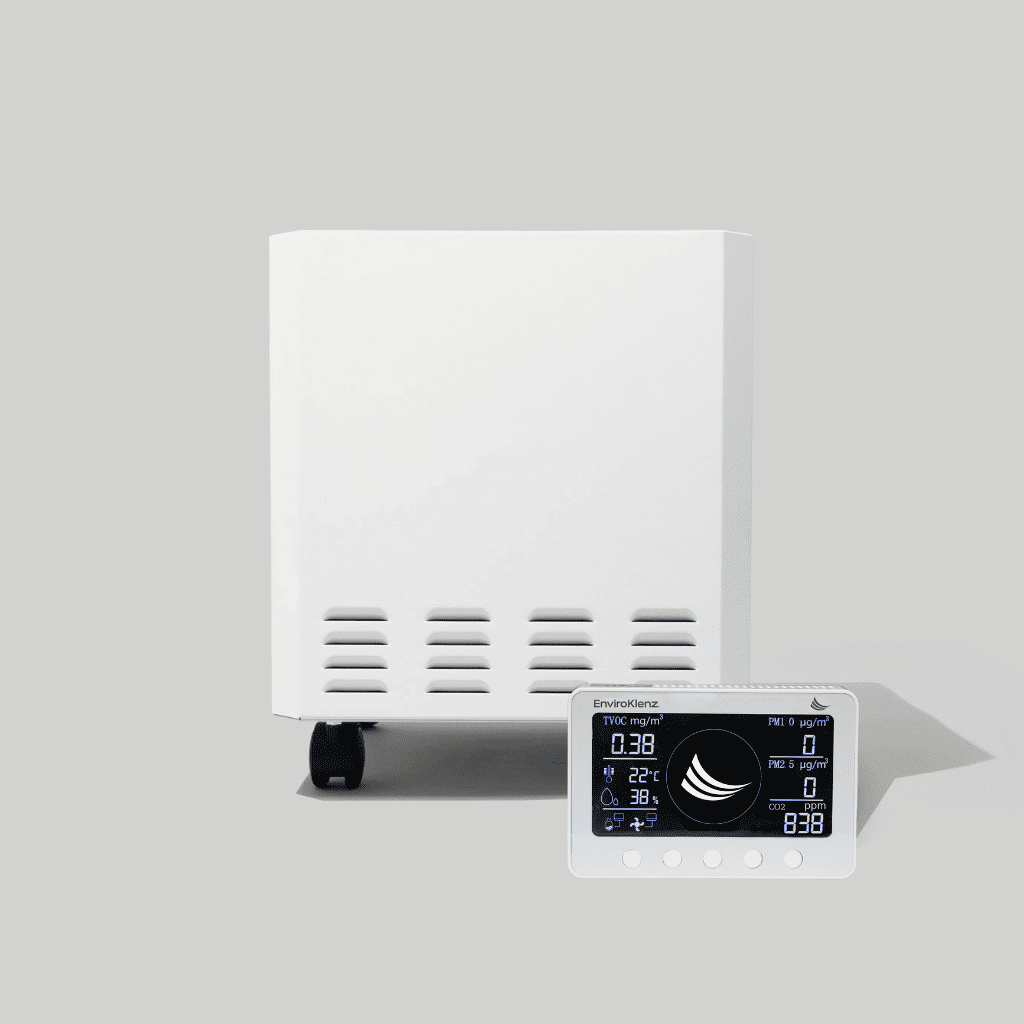A home is a sacred space for most individuals who take pride and comfort in making this indoor personal environment their safe space for both themselves and their family. There are usually very little threats present in a home in the eyes of the homeowners as they typically will do everything in their power to secure the environment either through implementing locks, alarms, fire extinguishers, and other protective equipment to provide the highest level of security from potentially hazardous threats. However, when it comes to internal threats inside of the home like indoor air pollution, often times people do little to combat these little toxins and airborne pollutants in the air that can significantly deteriorate the quality of the air in your home.
Indoor air quality, also known as IAQ, has become an important subject recently, as research and testing has pointed to a strong correlation between increasing levels of pollution in indoor environments and certain health effects imposed on occupants. According to the United States Environmental Protection Agency (EPA), studies of human exposure to air pollutants indicate that indoor levels of pollutants may be two to five times – and occasionally more than 100 times – higher than outdoor levels. And for the average American that spends about 90 percent of their time indoors this increased level of airborne pollution can have potentially significant effects on human health.
In this article we are going to discuss the different factors of indoor air quality and how indoor air pollution impacts human health, as well as learn more about what to look for in a home indoor air quality monitor for measuring indoor air pollutants.
What is Indoor Air Quality & Why is it Important
The importance of indoor air quality is significant for homeowners, as the air quality found within and around buildings and homes can drastically impact the health and comfort of these building occupants. Usually, when we think of air quality problems and concerns, the main focus will go to outdoor conditions, rather than indoor environments like a home. However, there are many different sources of air pollution that can be found within and around the indoor space of your home. These airborne pollutants can range from gases to particles that are released from a wide variety of sources including building materials, chemical cleaning products, flooring, furniture, and even pollutants produced from occupants.
Airflow and ventilation in a home or other indoor environment can play critical roles in the impact both adverse and beneficial to the indoor air quality. Recently, airflow and ventilation has become restricted within newer buildings and homes based on the new method of building home’s ‘tighter’ to be more economical. When homes have restricted ventilation and airflow it will increases the buildup of airborne pollutants in the environment that will ultimately lead to elevated levels of pollution that can severely taint the indoor air quality in the indoor environment. As air pollution levels continue to accumulate and increase to higher numbers, it can have a major impact on the health of those occupants within the environment such as for those who suffer from conditions like asthma/allergies, children, the elderly, or any person with pre-existing conditions.

What Causes Indoor Air Pollution
There are several different factors harbored within your home that can produce and/or create potentially toxic pollutants into the air, and this can come from the most unsuspecting of sources in the indoor environment. Some of the key components to indoor air pollution can include toxic products used in the environment, inadequate ventilation, high temperature and humidity, which can all lead to and create different pollutants into the indoor air.
According to the Conserve Energy Future, there are a few different causes to indoor air pollution in a home that are more prevalent than others, and these air pollution causes in the indoor environment can include the following;
- Formaldehyde: One of the leading causes of indoor air pollution, formaldehyde production and usage has been limited in the United States. This chemical is a known volatile organic compound (VOC) that has been found in paints, sealants, flooring, and other household materials and items. When formaldehyde becomes airborne in your personal indoor environment it can significantly alter indoor air quality and potentially irritate the health of those exposed to this VOC.
- Asbestos: Labeled as the leading cause of indoor air pollution, asbestos is a group of six naturally occurring fibrous minerals composed of thin, needle-like fibers. These pollutants can be found in various materials including in home construction materials like coatings, paints, building materials, ceilings and floor tiles.
- Tobacco Smoke: Smokers that create and emit tobacco smoke into the air will be producing toxic airborne pollutants into the environment that can be a leading cause of air pollution in the indoor space of the home. Smoke produces chemical compounds and particulate matters into the air that can tremendously alter the IAQ in the environment.
- Airborne Contaminants (mildew, mold, bacteria, dust mites, etc.): Many airborne contaminants that find their way into an indoor environment and rapidly grow are usually brought from outdoor air that attracts to these enclosed indoor environments. These airborne contaminants are commonly referred to as allergens that can come or develop in an indoor environment and lead to health issues or aggravations in those exposed.
- Gases (carbon dioxide, carbon monoxide, etc.): Stoves, space heaters, fireplaces, and other combustion producing items in the home can create and produce carbon monoxide, dioxide, and other chemical compounds into the air. These pollutants can contribute to poor indoor air quality levels and thus having proper ventilation in place near these household items is important to IAQ.
Poor Air Quality Symptoms
The presence of poor indoor air quality in your personal indoor environment can drastically effect and impact the health of those occupants frequently exposed to these air pollution levels. The health effects and symptoms that an individual experience from indoor air pollution in their indoor environment can depend on several factors in the space, including the ventilation and air flow in the structure, the level of pollutants, the type(s) of pollutants in the environment, and that person’s susceptibility to health effects based on previous health conditions.
However, the common symptoms that have been linked to poor air quality in the home, according to the Canadian Centre for Occupational Health & Safety (CCOHS) includes the following;
- Dryness and irritation of the eyes, nose, throat, and skin
- Headache
- Fatigue
- Shortness of breath
- Hypersensitivity and allergies
- Sinus congestion
- Coughing and sneezing
- Dizziness
- Nausea
How to Measure Air Quality at Home
Does it constantly feel like you are exposed to elevated levels of air pollution in your home that may be causing you to experience certain health effects in the environment? If so, this may be because your home is full of a different spectrum of airborne pollutants that can be caused from a variety of sources in your home, such as those listed above that we talked about previously. There are a variety of pollutant types that can be found in indoor air such as particulate matter, chemical VOCs, combustion pollutants, and even environmental components like humidity and temperature that can play a major role in the IAQ of a home.
When it comes to identifying, detecting, and monitoring your home’s indoor air quality and pollutant levels, a common go-to is the use of a home air quality monitor. These devices are cost effective, and efficient in comparison to other monitoring methods such as having an air quality company come and take measuring samples of your home’s air.

Using Air Quality Monitor for Home
An at home air quality monitor is a device that is designed to detect, track, and monitor airborne pollution levels in an indoor environment, allowing the monitor to detect certain pollutants and environmental conditions. These affordable and effective air quality monitors come in a variety of sizes, shapes, styles, and capabilities when it comes to detecting different pollutants. The air quality monitor options available to consumers today will focus on the monitoring of certain pollutants, whether that be tVOCs (total VOCs), PM2.5 (particulate matter), combustion pollutants (carbon monoxide and carbon dioxide), humidity, temperature, and radon levels.
Below we are going to discuss the different pollutants that most air quality monitors can detect and what these specific types of pollutants contribute to and/or are released from in the environment.
VOC Monitor: tVOC Air Quality Levels
Volatile organic compounds (VOCs) contain a wide range of carbon based, organic compounds that can be found and used in various materials, supplies, and items present in a home or other indoor environment. These VOCs are emitted into the air as a gas that forms from solids or liquids in the environment, and this gaseous compound(s) are known to be health disruptors that can aggravate human health in many cases. VOCs can be emitted from a variety of products in a home such as paints, wood preservatives, aerosol sprays, cleansers and disinfectants, air fresheners, and pesticides, according to the EPA.
When it comes to identifying and monitoring the levels of VOCs or tVOCs (total VOCs) in your home, this will allow for a homeowner to take action in implementing indoor air quality solutions to aid in the minimization and/or reduction of the overall level of VOCs in the environment’s airspace. There are many different types of air quality meters or monitors that can be utilized in the indoor space of a home to estimate the tVOC levels that are currently present in the air.
CO2 Monitor for Home
Carbon dioxide (CO2) is a colorless, odorless gas at room temperature that can be present in your home at potentially increased levels which may be hazardous to both the indoor air quality and the health of those occupants exposed to these levels in their air. Most houses have a carbon dioxide presence in their home, however, there are some sources within a home like soil, lack of fresh air, home appliances, and HVAC systems that can lead to the creation of increased levels of CO2 in a home’s air.
A CO2 monitor or detector for the home is a device that has the capability to detect the levels of carbon dioxide gas in an indoor environment, and therefore allow the occupants of the home to monitor the levels whether they are low or elevated in the air.
Humidity and Temperature Air Quality Monitor
The overall humidity and temperature in an indoor environment can play a significant role in the IAQ within this space – as air reaches a certain temperature and contains all the water vapor it can hold, this will increase the relative humidity that will lead to health problems, discomfort, and an overall less hygienic atmosphere. When temperature and humidity are at altered levels in a home this can lead to the development of certain pollutant growth like airborne mold and mildew in the environment. Thus, being able to monitor the levels of both the humidity and temperature in the indoor space will allow a homeowner to accomplish optimal environmental conditions within this environment.
Best Indoor Air Quality Monitor
When it comes time to selecting an indoor air quality monitor for placement in your home or other personal indoor environment, it is important to learn about the different pollutant types that are measured and detected by the device. Depending on the specific air quality monitor, some will detect multiple airborne pollutants and others will only focus on one in the environment, and therefore you will want to ensure that your meter is covering a various assortment of pollution types in your indoor air. Thus, one of the most popular air quality monitors on the market today is the Airthings Wave Plus, a broad-spectrum air quality monitor that detects multiple airborne pollutants found within your indoor air.
Airthings Wave Plus is the first battery-operated smart IAQ monitor with Radon detection, including sensors for temperature, air pressure, humidity, TVOCs, and CO2. This indoor air quality monitor allows a homeowner to gain full visibility into 6 sensors including the 3 most serious indoor air pollutants, as well as detailed views of temperature, air pressure, humidity, and additional sensors for advanced analytics options. The Airthings Dashboard allows homeowners to view a snapshot of their indoor air quality including interpretations of IAQ data with alerts and advanced analytics. In addition, an easily viewed compare and export data that gives tips to reduce indoor air hazards, optimize ventilation, and save on energy costs in the home.
How to Reduce Indoor Air Pollution
What do you do if you get a home air quality monitor, only to discover that the levels of pollutants in your air at an elevated level? When your indoor air quality levels are compromised by air pollution in the environment the best way to reduce this indoor air pollution is to integrate an indoor air quality solution like an air purification device. An air purifier is a device that works to effectively filter the indoor air in an environment, removing toxic pollutants that are known hinderances to IAQ and human health.
The EnviroKlenz Air Purifier is a one-of-a-kind air purification system that works using a proprietary earth mineral technology to eradicate and neutralize a broad spectrum of noxious and toxic chemicals and odorous compounds from the indoor air of an environment. The two-stage filtration process in the EnviroKlenz Air Purifier contains the 1st stage – the EnviroKlenz Air Cartridge with the patented EnviroKlenz® earth mineral technology for chemical and odor neutralization, and the 2nd stage- a hospital-grade HEPA filter that works to capture and remove fine particulate matter from the air, anything larger than 0.3 microns in size at a 99.99 percent efficiency. Therefore, the EnviroKlenz Air Purifier offers a wide-range of protection and removal of a broad spectrum of airborne pollution found in a home, making it an essential component to IAQ in a home or other personal indoor environment.
Article Sources:
- Environmental Protection Agency (EPA): Indoor Air Quality (link)
- Conserve Energy Future: What is Indoor Air Pollution? (link)
- Canadian Centre for Occupational Health and Safety (CCOHS): OSH Answer Fact Sheets – Indoor Air Quality (link)
- Environmental Protection Agency (EPA): Volatile Organic Compounds’ Impact on Indoor Air Quality (link)









